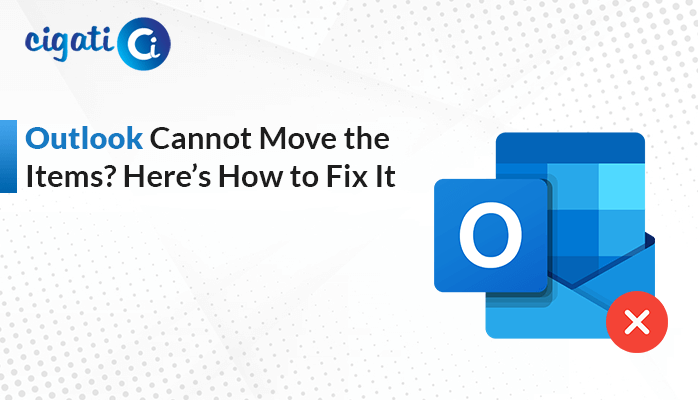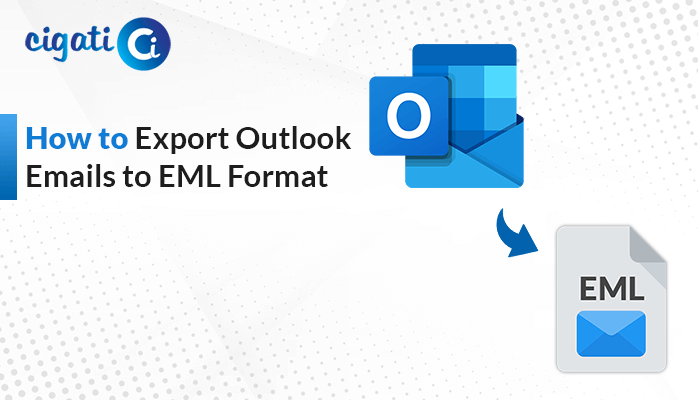-
Written By Rohit Singh
-
Updated on January 4th, 2024
Fix Microsoft Outlook Slow to Receive Emails Issue
Do you find yourself getting frustrated with the slow email reception of Outlook? You’re not alone. Many Outlook users have experienced delays in receiving their emails. It can be a significant inconvenience, especially for those who rely on email for work or personal communication. In this blog post, we’ll explore some common reasons why Outlook slow to receive emails. Moreover, we’ll provide you with practical tips to improve its speed.
The error message “Delay in Receiving Emails in Outlook” is not a specific error message generated by the Outlook email client. Instead, it is a descriptive statement or a user observation that indicates the user’s perception that Outlook is taking a longer time than expected to receive new emails. Additionally, it’s not an error code but rather a symptom of a performance issue or delay in Outlook’s email synchronization process.
Also Read: Outlook Data Files Usage is Disabled on this Computer
How Does Outlook is Running Slow Error Cause?
Nowadays, slow email performance can be a prime frustration, impacting your productivity and communication efficiency. The following section will discuss common reasons for the Outlook Email Slow to Receive problem.
- One of the prime culprits behind sluggish email sending and receiving is large attachments.
- The larger these folders become, the more Outlook has to process, leading to performance Outlook Slow to Receive Emails issues.
- Slow email performance can also be attributed to issues beyond your control, such as server problems or network connectivity issues. As a result, it causes Outlook is Slow to Send and Receive errors.
- While Outlook add-ins can enhance functionality, some may slow down your email client.
- Outlook relies on data files (PST or OST) to store your emails and other information. If these files become corrupted, it can result in slow email performance.
- Security software and firewalls are essential for safeguarding your system, but they can sometimes hinder email synchronization.
- Ensure that you’re running the latest version of Outlook to benefit from bug fixes and performance enhancements introduced in updates.
A slow Outlook email experience is far from ideal, but understanding the root causes and taking action to address them can make a significant difference. Now, we will learn how to resolve this Slow to Receive Emails in Outlook problem.
How to Solve Outlook Slow to Receive Emails Error?
Is your Microsoft Outlook taking an eternity to receive emails? Slow email reception can be quite frustrating, but there are simple solutions to speed things up. The upcoming section will show you how to troubleshoot the error.
#1. Check for Hard Drive Issues:
Sometimes, your computer’s hard drive may have bad sectors, causing your Outlook to slow down when receiving emails. Moreover, it occurs because the PST file (where Outlook stores your emails) might get damaged in those locations. To fix this, you can use a built-in Windows tool called CHKDSK. Here’s how:
- Open Command Prompt (you can search for it in your computer’s search bar).
- Type “chkdsk /r” and press Enter.
- Windows will scan and repair any local drive issues. It may take a bit of time, so be patient.
#2. Fragmented Hard Drive:
If you’ve been using the same hard drive for a long time without proper maintenance, it can get fragmented. It means that Outlook stores incoming emails and other data in different scattered locations instead of one tidy spot. To fix this Outlook slow to Receive Emails error:
- You can use the built-in Windows defragmentation tool. Search for Defragment and Optimize Drives in your computer’s search bar.
- Select your hard drive and click Optimize. In addition, it will organize your data for better performance.
#3. Compact Your Outlook PST File:
Sometimes, your Outlook data file (PST) can become quite large and slow down email reception. You can make it more efficient by reducing its size. Here’s how:
- First, open the Outlook application.
- Then, go to File >> Account Settings >> Account Settings.
- Now, click on Data Files.
- After that, choose the PST file you want to compact and click Settings.
- Click Compact Now.
Note: This might take a while, depending on how big your PST file is.
#4. Speed Up Outlook by Dealing with Problematic Add-Ins
It might be due to incompatible add-ins causing delays.
- First, launch the Outlook application.
- If you’re using Outlook 2007 or 2010, click the File tab and select Outlook Options.
- If you have a newer Outlook version (2013 and later), follow these steps:
- Click on the File tab.
- After that, look for Options and click on it.
- A new window will appear. Here, click on Add-Ins.
You’ll now see a list of add-ons that are currently installed in Outlook.
- To speed up Outlook, you can turn off all add-ins. Simply uncheck the boxes next to the add-ins.
- Now, try sending, receiving, or managing emails in Outlook to see if it’s working smoothly.
If Outlook works fine after turning off all add-ins, you’ve likely found the culprit.
- To pinpoint the problematic add-in, turn them on one by one, checking Outlook each time you enable one.
- This step will help you figure out which add-in is causing the slowdown.
#5. Manually Sync Your Mailbox:
When Outlook’s automatic syncing isn’t cutting it, you can manually update your mailbox. Here’s how to fix the Outlook slow to Receive Emails error:
- In Outlook, go to the Send/Receive tab.
- Click the Update Folder button.
Your Outlook will sync and update all folders, so your new emails should appear in your Inbox. But this might be something you need to do often, which can be a hassle. So, let’s explore more fixes.
#6. Temporarily Disable Your Antivirus:
Sometimes, your antivirus software can conflict with Outlook and cause delays. Here’s how to check if it’s the culprit:
Temporarily turn off your antivirus. Restart Outlook. Send an email to your Office 365 account and check your Inbox.
If you receive the email quickly, it’s a sign that your antivirus is the issue. You might want to replace it with antivirus software that plays nice with Outlook, or you can add Outlook processes as exceptions in your current antivirus settings.
#7. Run Outlook in Safe Mode:
If pesky Outlook add-ins are causing the problem, you can start Outlook in safe mode to identify and remove the troublesome ones:
- Close the Outlook application.
- Then, press the Windows key + R.
- Type “Outlook.exe /safe” and press Enter.
If Outlook starts fetching emails faster in safe mode, you’ll know there’s a problematic add-in to deal with.
#8. Repair Your Outlook:
Sometimes, damaged or missing Outlook program files can lead to delays. You can try repairing your MS Office or Office 365 suite to fix the issue:
- First, open the Control Panel application.
- Then, click on Uninstall a program.
- After that, find MS Office and click Change.
- Now, choose the Repair option and click Continue.
It will restore any missing or damaged program files for MS Office and Outlook, hopefully speeding things up.
#9. Disable Cached Exchange Mode (Offline Mode):
Outlook often works in Cached Exchange Mode, which stores data locally. But if it’s causing
problems, you can switch to Online Mode for a more immediate email experience.
#10. Clear Outlook Cache:
Clearing the cache that Outlook uses may help resolve the problem of delayed emails:
- First, close the Outlook application.
- Then, press the Windows key + R.
- After that, type “%localappdata%\Microsoft\Outlook\RoamCache” and press Enter.
- Delete all the cache files in this folder and then restart Outlook. Your emails should arrive more quickly.
#11. Reduce Outlook Data File and Mailbox Size:
If your Outlook data file is too large, it can slow things down. Here are some ways to reduce its size:
- Compact the OST file.
- Archive old emails to a local PST file.
- Delete emails from the Junk or Trash folder.
- Empty the Deleted Items folder after checking.
- Enable Auto-Archiving to prevent future issues.
#12. Set Up a New Outlook Profile:
A corrupted Outlook profile can lead to delays in receiving emails. To fix this, you can create a new profile:
- First, open the Control Panel on your local screen.
- Then, click on Mail.
- Afterwards, click Show Profiles.
- Create a new profile and configure your Office 365 account.
- Always use this new profile when opening Outlook.
If all the above solutions are not working properly, it simply indicates your PST file is corrupted. If you want to repair them, opt for the Cigati Outlook PST Repair Tool. It will fix the corruption from your inaccessible PST files.
Time to Wrap Up!
A slow Outlook email reception can be a frustrating experience, but by addressing these common issues. Moreover, you can follow the tips mentioned in this blog post to fix the Outlook Slow to Receive Emails error. In addition, you can significantly improve your email synchronization speed. Whether it’s managing your attachments, decluttering your inbox, or ensuring a stable network connection. In fact, taking proactive steps can help you get the most out of Microsoft Outlook and enjoy a smoother email experience.
You May Also Read: Outlook is Running Slow
About The Author:
Rohit Singh is an Email Backup, Recovery & Migration Consultant and is associated with Software Company from the last 3 years. He writes technical updates and their features related to MS Outlook, Exchange Server, Office 365, and many other Email Clients & Servers.
Related Post




